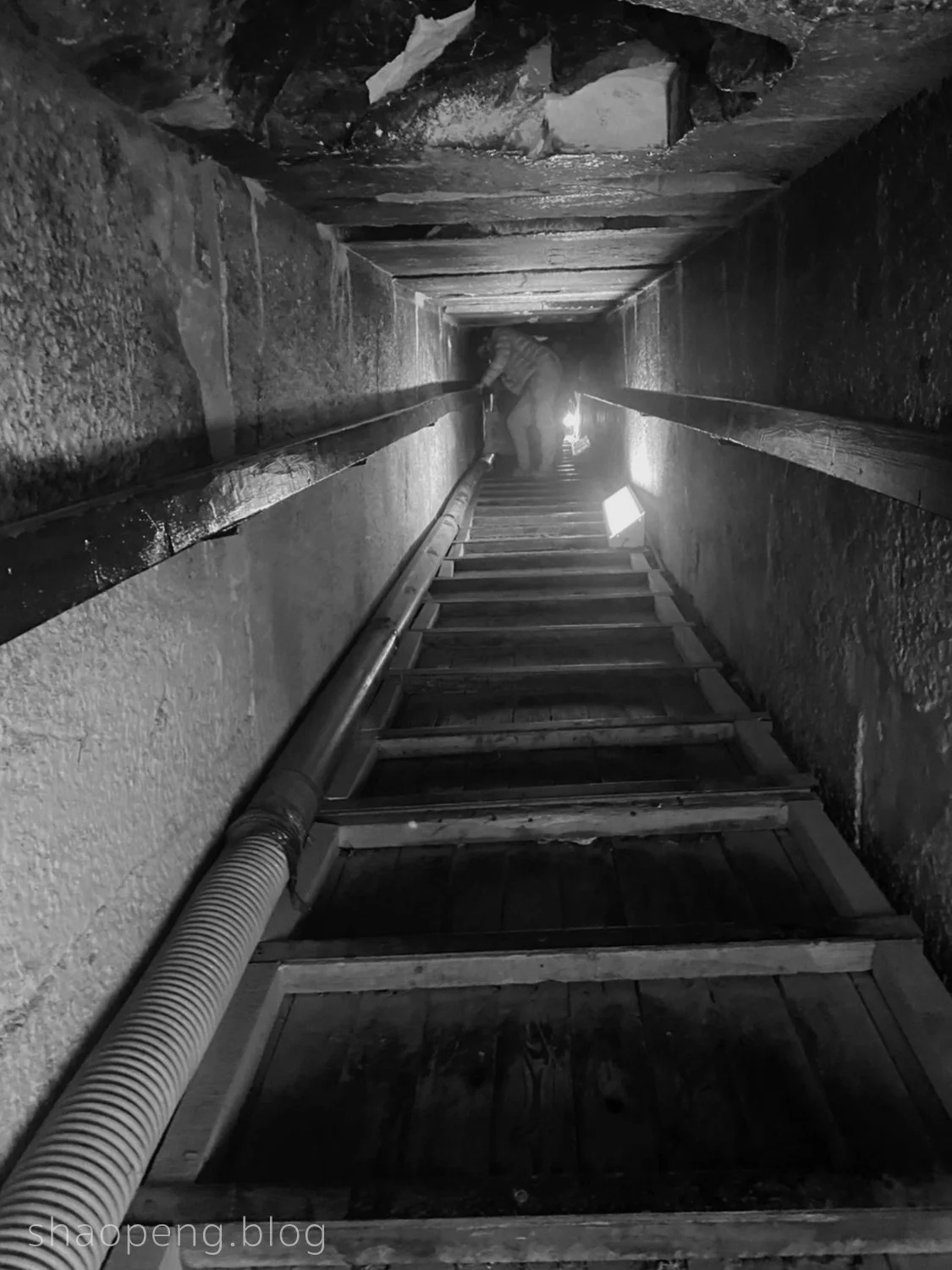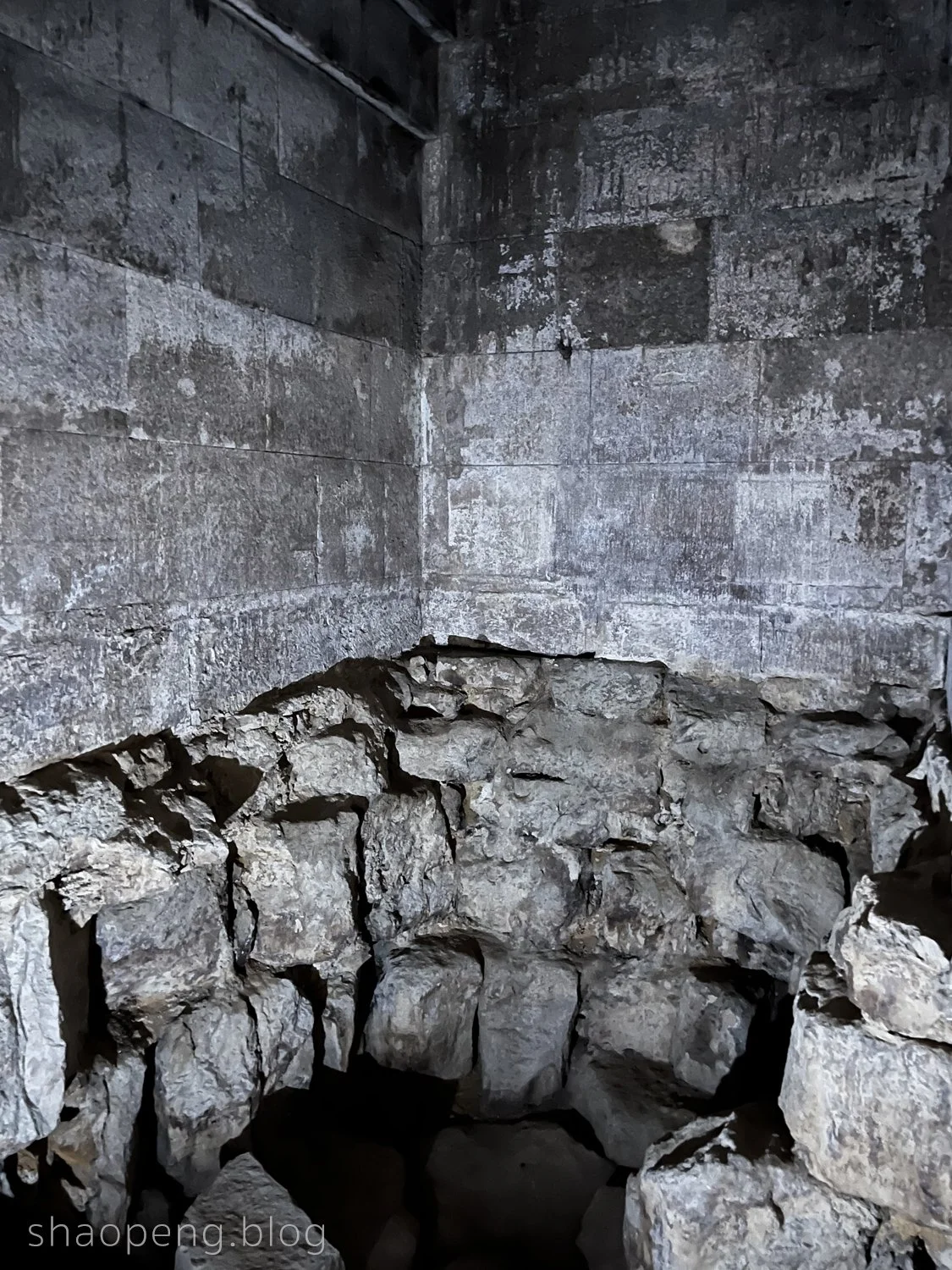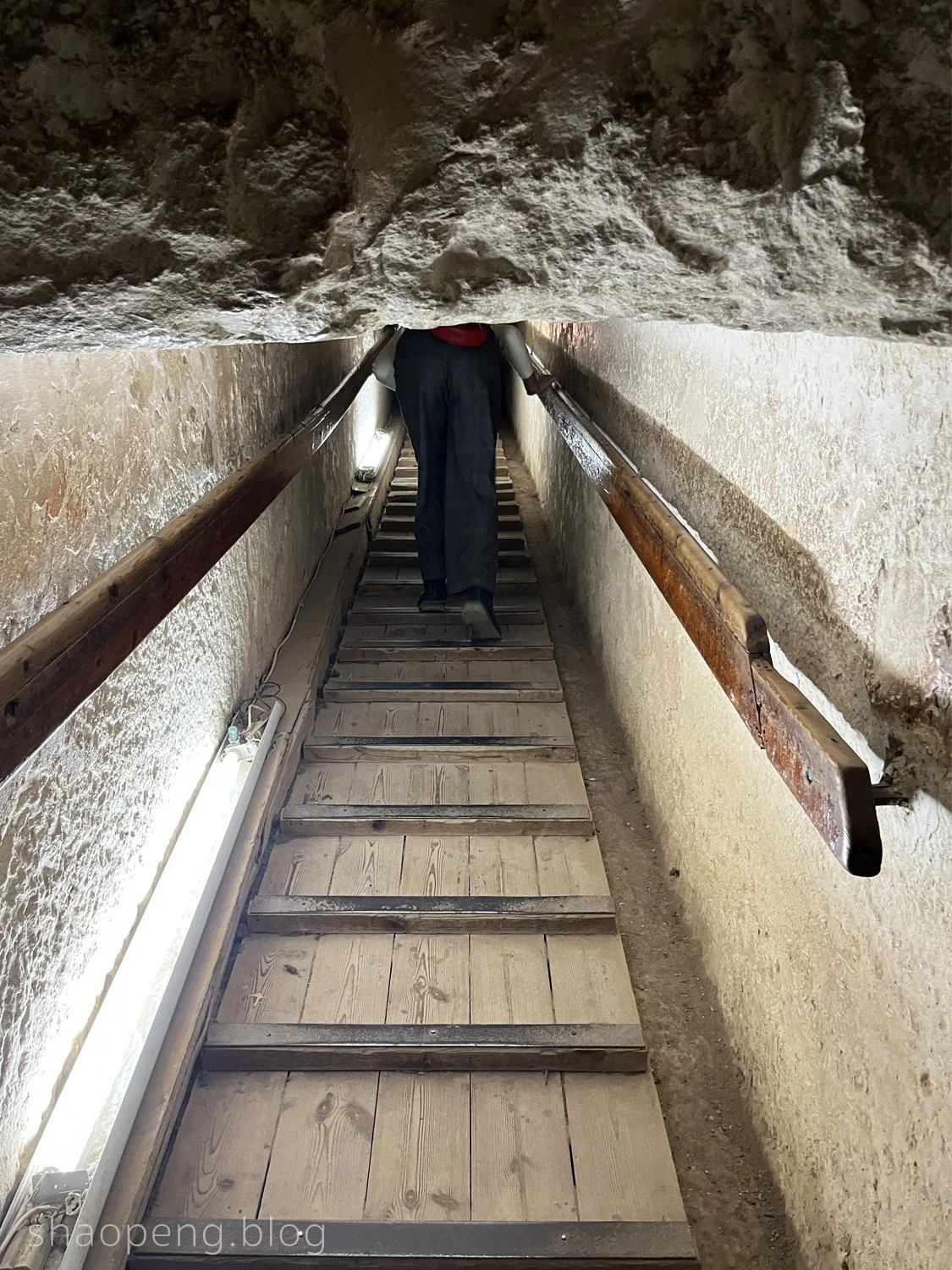Wander in Egypt: Treasure Hunting Inside the Pyramids
The physical and emotional challenges I faced throughout this adventure was akin to a soul-stirring pilgrimage that left a lasting impression on me.
📍 The Red Pyramid, Dashur, Egypt
Worth the Journey: ★★★☆☆
📍 The Pyramid of Khafre, Giza
Worth the Journey: ★★★★☆
Visitors braving the arduous ascent up the “stairs” of the Red Pyramid in order to reach its entrance located 28 metres above ground level.
GIZA, Egypt — In “Wander in Egypt: Mystic Encounter With The Great Pyramids”, I shared about the incredible experience I had when visiting the pyramids at Saqqara, Dashur, and Giza, and how I was awestruck by the sheer magnitude of these monuments. Filled with wonder, I was standing before the cornerstone of an invaluable cultural legacy left by the ancient Egyptian civilisation.
The pyramids of Egypt have long been shrouded in myth and lore, inspiring the imagination of those who gaze upon them. Like a siren’s song, the mysteries within have called out to its beholders like you and me, beckoning us to unravel its hidden secrets.
As I child, I fanticised about the relief-carvings and hieroglyphics found on its walls, their images brought to life by the rich, vivid pigments ground from minerals. I also dreamed of the beautiful jewels and treasure troves that could be found next to the mummified pharaohs.
My heart was racing with anticipation when I found out that I was about to embark on a treasure hunt within these monumental wonders. But the reality I encountered within the pyramids fell far from the dreams and imaginings of my youth.
The entrance to the Red Pyramid can be seen on its northern facade, roughly midway up.
Into Egypt’s First True Pyramid: The Red Pyramid
The Red Pyramid earns its name from the red limestone that was used in its construction. Commissioned by Pharaoh Sneferu (reigned 2613 - 2589 BC), the Red Pyramid was the first true pyramid that came to be built in Egypt.
Treasure hunting inside the Red Pyramid is not an easy undertaking. Its entrance is located 28 metres above ground level, roughly midway up its northern facade. To gain access to its entrance, one must ascend the treacherous “stairs” comprised of massive blocks of stones, each measuring approximately 60 to 90 centimetres in height.
When I arrived at the entrance, I found myself gasping for air and exhausted from the climb. I was overly optimistic then, thinking that the toughest part of the journey was behind me.
I spot a guard sitting outside the doorway, welcoming the arrival of this new flurry of visitors. Captivated by his charismatic grin, I failed to notice that the steel-grey traditional robe and chèche he donned was a harbinger of the trials to come.
I had to duck down in order to enter its tiny entrance. I was the first to step inside the Red Pyramid, which allowed me to lay my eyes upon a sight unseen by those behind.
A path was laid out before me, luring me to cross into the realm of darkness. “Come further. Come further,” it softly whispers.
The tunnel grew increasingly darker as I ventured deeper, with no source of light apart from the entrance, and a seemingly out-of-reach chamber at the far end. Nonetheless, I traversed the steep and cramped passageway with a mixture of thrill and trepidation, uncertain of what awaited me.
The passageway descends at approximately 28 degrees. The path beneath our feet is paved with wooden panels built for the connivence of visitors. Each step required me to use every muscle in my body to maintain full balance. I had to clung to the handrails, but the weight of my arms only added to the physical strain.
With every step, I had to summon all my strength to keep going, as it was not just a test of my physical ability, but also willpower. It is no surprise that visiting the pyramids involves navigating narrow passages and chambers, but I certainly didn’t except the expedition to be this physically demanding.
The steep and narrow passageway inside the Red Pyramid poses a challenge to one’s physical ability and willpower.
Upon reaching the base of the Red Pyramid, one arrives at an antechamber characterised by an impressive corbel-vaulted ceiling with over 12 courses.
The burial chamber inside the Red Pyramid was emptied by tomb raiders in ancient Egypt.
Despite the shafts and passages designed for air flow, the atmosphere inside the Red Pyramid remained thick, stale, and even suffocating. At times, I found myself struggling to catch my breath, caught up in moments of disorientation. It felt as if I were being pulled into a void of eternity, liberating me from samsara, the endless cycle of repeated birth. "
Far from my childhood fantasy, I found no paintings nor hieroglyphics within this architectural marvel, but walls that seem to have been blackened by the fire and torches of ancient visitors.
The passage is only about 60 metres long, but the journey felt incredibly long. “What if an earthquake were to take place now?” I thought.
At times, I would encounter visitors travelling in the opposite direction. When that happened, I had to yield to them by sticking to one side of the wall of this cramped tunnel.
Finally, I reached the base of the pyramid. I stepped into the first chamber where an impressive corbel-vaulted ceiling is found. This room leads to a second chamber, where a wooden staircase is installed for visitors to access the third chamber. By climbing up these stairs, one arrives at the heart of the pyramid: the burial chamber.
As I should’ve known, I have arrived but a millennia too late — the jewels and treasures have already been emptied by tomb raiders in ancient Egypt.
Anyone would’ve thought that this was the end of the journey. But no, it was merely a pit stop.
Having reached the end, I had to retrace my steps and ascend the steep and lengthy passageway that leads back to the entrance. And when I finally got out of the pyramid, I was exhausted to the point where I could barely feel my legs.
With a fear of heights, I reluctantly made my way down the Red Pyramid, my body weary from the exertion, and my consciousness fading with each passing moment.
As I descended along the massive stone blocks, I recalled a conversation with a Scandinavian woman I had met on my ascent up the perilous steps. I had asked her about her trip into the pyramid, and she simply replied, “You will cry!” It was only later when I realised that she was not joking.
The physical and emotional challenges I faced throughout this adventure was akin to a soul-stirring pilgrimage that left a lasting impression on me. This is why — despite my tired legs and overworked muscles — I made the decision to embark on another treasure hunt the very next day, into one of the Great Pyramids towering on the Giza plateau.
The Giza plateau is punctuated by the Pyramid of Khafre (left) and the Pyramid of Khufu (right). The Pyramid of Khafre can be identified with a distinctive “cap” at its tip, which is remnant of the pyramid’s original white casing stones.
Into Egypt’s Only Pyramid Left Capped: The Pyramid of Khafre
The Great Pyramids of Giza are the only one of the Seven Wonders of the Ancient World that has survived. Today, these pyramids remain a defining feature of the skyline on the Giza plateau to the west of Cairo.
The ancient Egyptians believed that the west was the resting place for the dead, as it was where the sun set, so they chose to build their burial tombs along the West Bank of the Nile River.
The Giza complex consists of three pyramids, each commissioned by a pharaoh — namely Khufu (reigned 2589 - 2566 BC), Khafre (reigned c. 2558 - 2532 BC), and Menkaure (reigned c. 2530 - 2504 BC) — from the 4th Dynasty, or the Golden Age of the Old Kingdom.
Despite my fatigue from previous day, I couldn’t pass on the opportunity of a lifetime to explore one of the Great Pyramids of Giza.
Out of the three Giza pyramids, I embarked on a journey into the Pyramid of Khafre, the second largest pyramid that stands at a height of 136.4 metres.
When viewed from the south of the Giza necropolis, the Pyramid of Khafre — though slightly smaller than the Pyramid of Khufu — appears to be taller. This is due to the fact that the former was built on a higher ground, hence the difference in elevation.
Apart from their heights, Pyramid of Khafre is seen wearing a distinctive “cap”, which is in fact the remnant of the pyramid’s polished limestone casing.
The Pyramid of Khafre has two entrances. I took the lower entrance found at ground level. Its lower passageway has a gentle inclination (at a 21-degree angle), making it easier to navigate than Red Pyramid’s steep descent. While I still had to hunch over, its passageway felt much more spacious.
Like the Red Pyramid, the walls within the Pyramid of Khafre remain unadorned. But to my delight, it had a much better ventilation system, and I could constantly feel a flow of fresh air.
Before I knew it, the descent came to an end, leading me to a horizontal chamber that connects to an ascending passageway. I was relieved to find that this slope, too, was not difficult to traverse.
I then arrived at a long corridor that provides ample space for visitors to navigate. At least, I was able to walk properly and keep my back straight.
The adventure culminates in a spacious burial chamber. Unsurprisingly, this burial chamber was also stripped of its treasures, leaving behind only a wall inscription left by Italian archaeologist Giovanni Belzoni — the first person to enter the pyramid’s inner sanctum in 1818.
The passageway found inside the Pyramid of Khafre has a much more gentle inclination.
The corridors inside the Pyramid of Khafre are extremely spacious.
In 1818, Giovanni Belzoni arrived at the Pyramid of Khafre, becoming the first person to enter its inner chambers. On the wall, we see an inscription left by the Italian archaeologist: “scoperia da G. Belzoni. 2 MAR, 1818” (translated: discovery by G. Belzoni. 2 March, 1818)
Treasure Hunting as a Craft in Ancient Egypt
While it’s true that treasures and jewels were once buried with the pharaohs, but the question remains, where have they gone?
Tomb raiding in Egypt began well before the arrival of the Europeans. In fact, looting can be traced back to as early as 2000 BC, when Pharaoh Merikare (reigned c. 2075–2040 BC) allegedly admitted to his own son that he had engaged in such practice.
In 1100 BC, looting of royal tombs became an organised crime. In response, the mayor of Thebes ordered the arrest of the culprits, when brought before a court and asked to take an oath, recounted: "…We took the gold from on top of the mummy, as well as the amulets and ornaments from around his neck. We [also] stole all the goods we could find - gold, silver, and bronze objects...”
Looting continued under Roman and Byzantine emperors who relocated monuments, obelisks, and sphinxes to their capitals and private villas. By the time when Egypt came under Islamic rule, a period that began in mid-7th century, there were even how-to guides for tomb raiding in circulation.
A medieval Arabic manuscript called The Book of Buried Pearls was a treasure hunter’s guide, listing over four hundred sites across Egypt that was said to hold hidden treasures. In 1904, The Egyptian Gazette published the translation of a fragment from this lost manuscript, detailing the route that leads to treasures inside the Great Pyramid:
"Go to the Sphinx and measure from its face south-east twelve Maliki cubits… Dig between the two mastabas about a man's height,… and pass to the door which is the door of the Great Pyramid. Cross the threshold of the door… and before your face a great cell with the king of the former kings of Egypt, and kings with him and his son, around him, wearing their kingly robes adorned with gold and silver, and you will see their treasures and their emeralds, and pearls and ornaments of gold and silver...."
The Sphinx, often depicted as a mythical creature with the body of a lion and the head of a human, was a symbol of strength and wisdom; it was not only associated with the god Horus and the sun god Ra, but also served as a guardian to the tombs of the pharaohs.
After exploring the interior of the Pyramid of Khafre, I made the customary visit to the Sphinx, as most visitors do. However, I didn’t find any signs of a secret entrance that could potentially lead to hidden treasures.
Adventure inside the pyramids can be an exciting adventure, though I had to return empty-handed. It’s great to see how the structures inside the pyramids have remained relatively intact despite the passage of time.
With my journey to the heart of two pyramids now complete, I’m eager to embark on another treasure hunt soon. On my next trip to Giza, I look forward to exploring the largest pyramid, the Pyramid of Khufu, in search of any hidden gems that ancient and contemporary visitors before me might have missed.
.إلا لقاء، الجيزة
The writer ended her adventure by kissing on the Sphinx, so to guarantee her return visit to Giza, so “the legend” goes.
The writer’s visit to the Red Pyramid and the Pyramid of Khafre was made in January 2023. This article is part of the series “Wander in Egypt”.
Reference:
Atiya, F. (2006). Ancient Egypt. Cairo, Egypt: Dar al-Mushaf
(1904, January 23), The Secret of the Sphinx. Weekly Irish Times, 23
Vercoutter, J. (1992). The Search For Ancient Egypt. London, England: Thames & Hudson










